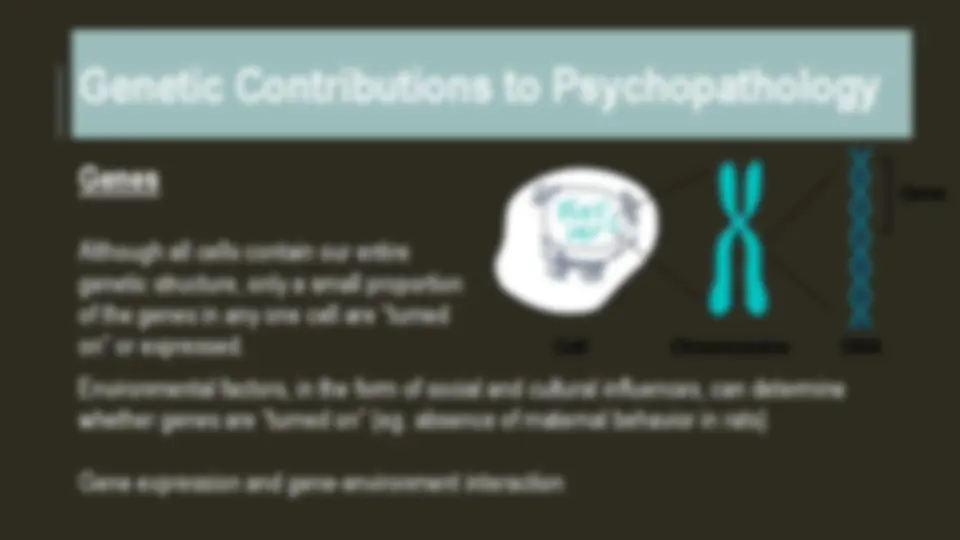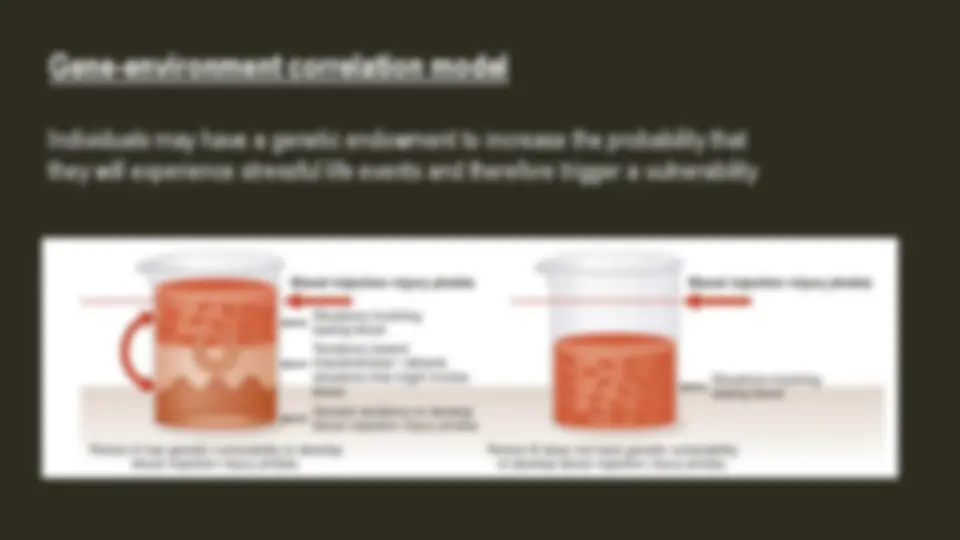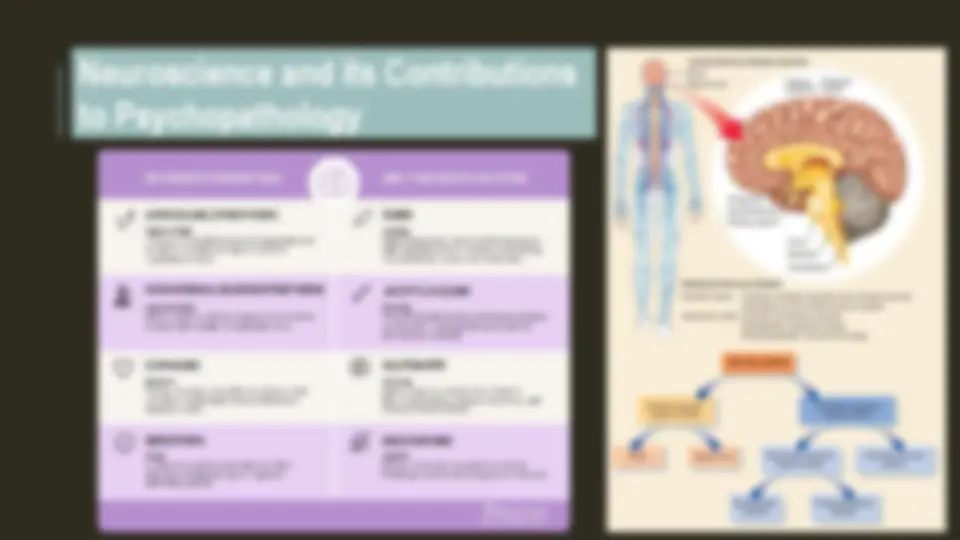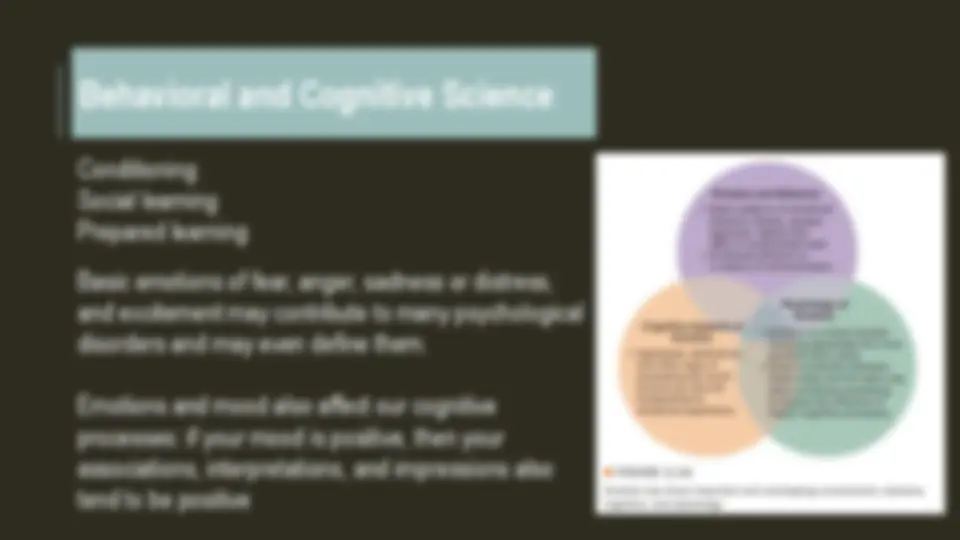








Study with the several resources on Docsity

Earn points by helping other students or get them with a premium plan


Prepare for your exams
Study with the several resources on Docsity

Earn points to download
Earn points by helping other students or get them with a premium plan
Community
Ask the community for help and clear up your study doubts
Discover the best universities in your country according to Docsity users
Free resources
Download our free guides on studying techniques, anxiety management strategies, and thesis advice from Docsity tutors
Study notes for chapter 2 in abnormal psychology
Typology: Study notes
1 / 12

This page cannot be seen from the preview
Don't miss anything!







P S Y C H 11 0 A B N O R M A L P S Y C H O L O G Y
TOPIC 2
One-dimensional Multi-dimensional
Although all cells contain our entire genetic structure, only a small proportion of the genes in any one cell are “turned on” or expressed. Environmental factors, in the form of social and cultural influences, can determine whether genes are “turned on” (eg. absence of maternal behavior in rats) Gene expression and gene-environment interaction
Diathesis-stress model Individuals inherit tendencies to express certain traits or behaviors, which may then be activated under conditions of stress.
Gene-environment correlation model Individuals may have a genetic endowment to increase the probability that they will experience stressful life events and therefore trigger a vulnerability
Behavioral and Cognitive Science Conditioning Social learning Prepared learning Basic emotions of fear, anger, sadness or distress, and excitement may contribute to many psychological disorders and may even define them. Emotions and mood also affect our cognitive processes: if your mood is positive, then your associations, interpretations, and impressions also tend to be positive
Cultural, Social and Interpersonal Factors